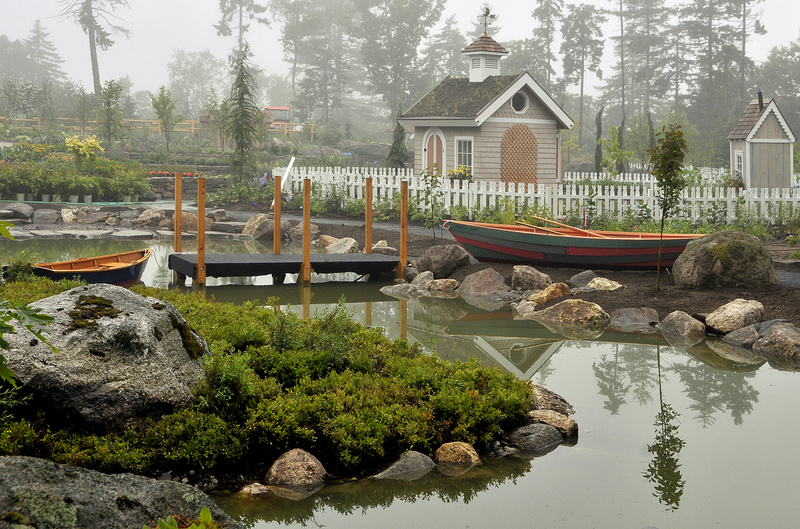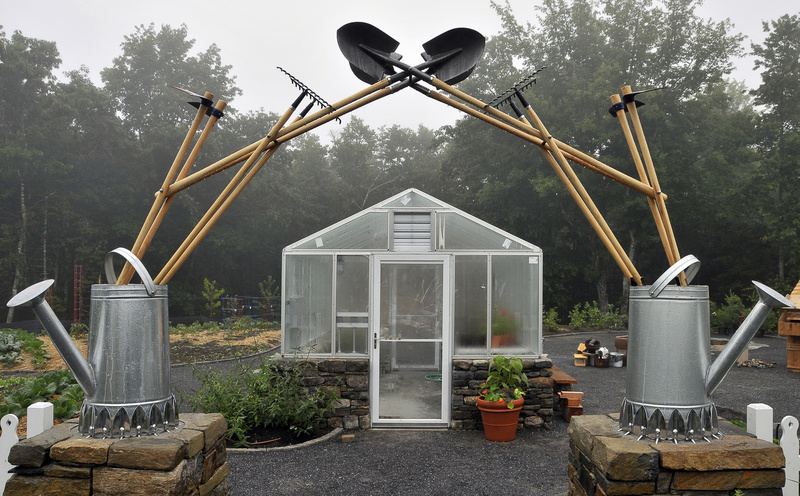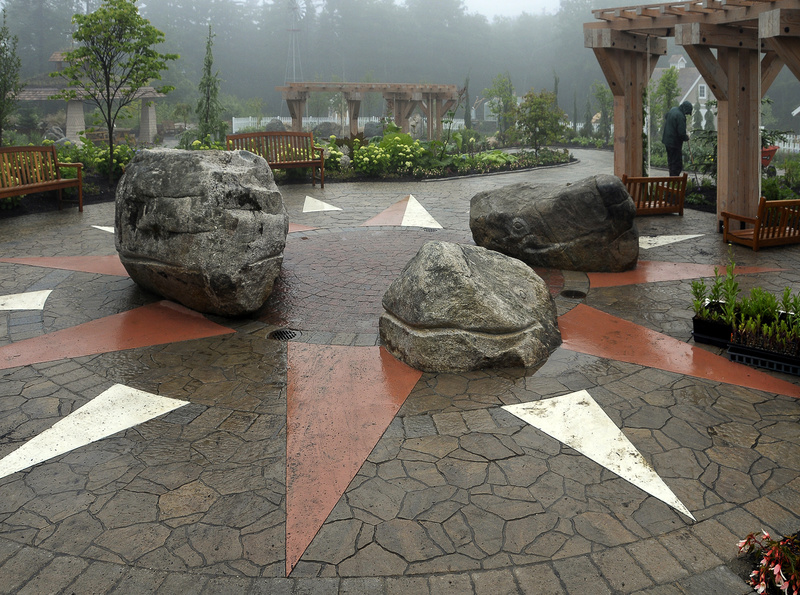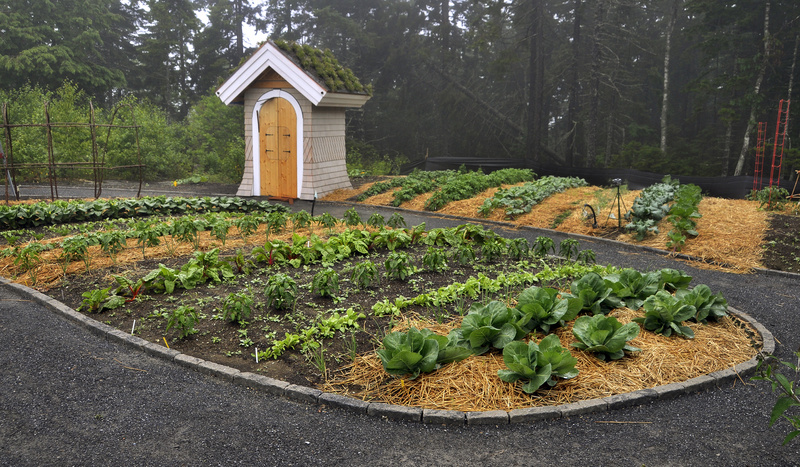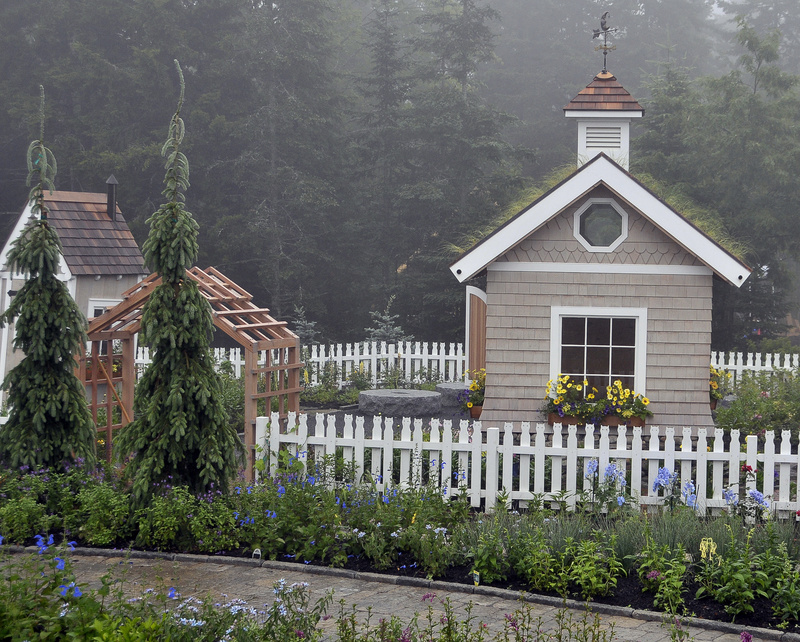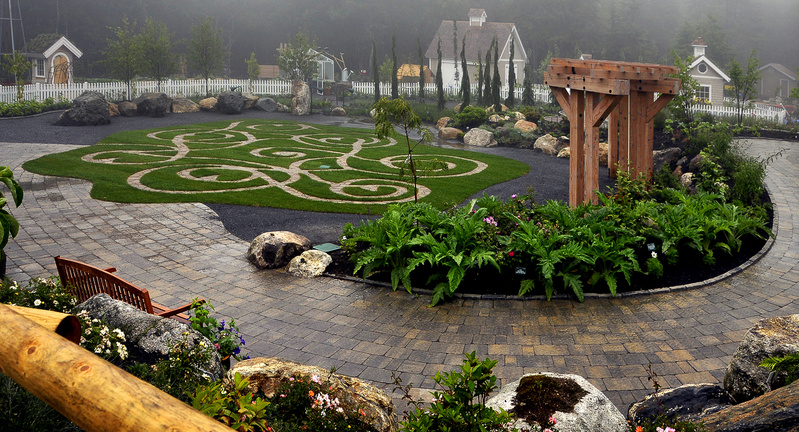BOOTHBAY – It’s easy to see that the folks at Coastal Maine Botanical Gardens had fun putting together the new 2-acre children’s garden, scheduled to open to the public on Thursday.
There’s a pond with three bridges leading to two islands with blueberry bushes, which visitors are allowed to pick. Nestled among the bushes is a bronze bear cub from the classic Maine children’s book “Blueberries for Sal” by Robert McCloskey, created by Boston sculptor Nancy Schon.
It’s just one of several features in the garden inspired by Maine children’s literature, including a working rowboat in the pond to evoke McCloskey’s “Burt Dow, Deep Water Man,” and a topiary shaped like the title character of Barbara Cooney’s “Miss Rumphius.”
Plus, there are plenty of interactive features. Children can harvest eggs from a chicken coop, pick blueberries and water flowers. There’s a story barn full of books, a keeper’s cottage where visitors can color or draw, a vegetable garden, a tree house and a planned Native American camp area.
There’s also a windmill weather station, a lupine meadow, a “rainbow” terrace with bright-colored plantings and a fruit tree orchard.
Not to mention that the 18,000 plantings were picked with children, and fun, in mind. Giant weeping spruce and weeping cypress trees look like some tall, scraggly Dr. Seuss characters. Giant rhubarb plants have leaves bigger than your average 2-year-old child. There are bright blue, purple, silver, red, yellow and orange flowers.
Plants are labeled clearly with their funny, yet accurate, names — pinky winky hydrangeas and big dude magnolias, for instance.
“We picked things that we thought would be fun and interesting for kids, but really it’s full of unusual things that make it a fun and interesting garden for anyone,” said William Cullina, director of horticulture and plant curator at Coastal Maine Botanical Gardens.
It’s true that anyone who likes gardens will like the children’s garden, but it was clearly designed as a way to get kids interested in this place.
“Our original mission is education, and this is something that will definitely help us get children and young families through the door and expand our membership,” said Maureen Heffernan, executive director of Coastal Maine Botanical Gardens.
The children’s garden is officially named the Bibby and Harold Alfond Children’s Garden, after the late Maine philanthropists. The couple gave a $1.5 million challenge grant for the project several years ago, and the nonprofit CMBG raised another $1.5 million.
About $1.7 million was used to build the children’s garden, and the rest created an endowment to fund the garden in the future.
It was designed by renowned garden designer Herb Schaal, who did the overall plan for CMBG and has done several children’s gardens around the country. Then staff and others connected to CMBG fine-tuned things, adding features they felt would bring the garden alive.
There are watering cans, for example, so kids can just water plants at will. And the staff knows that might mean some toddlers will spend their whole day watering a single plant.
“We’re going to put some semi-aquatic things over there, so they can’t be over-watered,” said Cullina.
Coastal Maine Botanical Gardens has grown steadily since it opened as a nonprofit public garden in 2007. Last year’s addition was a sensory garden, with a focus on smell, touch and handicapped accessibility.
All gardens within the property are accessible for one admission price: $10 for adults, $5 for children ages 3 to 17, and free for children under age 3.
With education as a mission, the garden has a strong dose of literature, including the story barn, where families can browse 300 or so books and attend occasional storytimes.
Other educational components include composting demonstrations and a weather station. But there are purely fun elements too.
When you enter the children’s garden, there are giant boulders sculpted to look like the smiling heads of whales, done by Carole Hanson of Damariscotta. And they spout water.
At another point in the garden, there are boulders sculpted by Hanson to look like dragons, and you can roar into a pipe connected to them to give them voice.
There’s a bog area near the pond, where carnivorous plants will be. Children who can’t stand still to look at pretty flowers might be fascinated by the sight of a bug being swallowed by a plant.
“Kids love extremes, in size, in color,” said Heffernan. “So we tried to do a lot of that.”
Staff Writer Ray Routhier can be contacted at 791-6454 or at:
rrouthier@pressherald.com
Send questions/comments to the editors.


